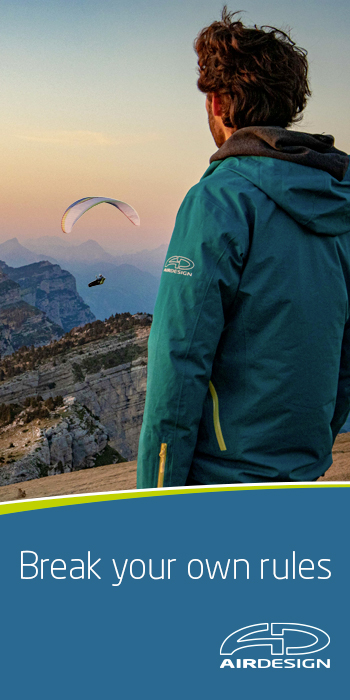TIPS ON BECOMING A GOOD PILOT!
The Paragliding Master Tips are a series of articles designed to improve existing skills and techniques as well as help learn new ones. Intended for the beginner to intermediate pilot, these tips and tricks are offered as guidelines from some of paragliding’s most knowledgeable and experienced pilots.

2 – Preparing your glider
It is important when learning a new skill to think about what works and what doesn’t. This way we can learn from the process to multiply successful experiences and prevent making repeated mistakes.
We often see experienced pilots struggling with the fundamentals of ground handling and launch techniques; I for one hold my hand up!
With some ground level tips on glider preparation, we can concentrate on improving ground handling skills and launch techniques, to feel confident about launching successfully and safely even in the strongest conditions.
Emma Casanova

Become skilful not lucky
Let’s begin with glider preparation and inflation.
Without good preparation, any successful launch will probably be down to more luck than skill. The goal in this exercise is to achieve a symmetrical, well-balanced “wall” with the canopy, which will lead to the symmetrical inflation of your glider. Maintaining the control of the wing right from the start is key here, so here is what you can practice.
Facing the glider with our hands through the brake handles position your hands on the lines just above the pulleys. This will enable you to use a combination of body and hand movements on the controls to gently inflate the glider without allowing the trailing edge to leave the ground.
Maintain your ground with a firm stance and don’t allow yourself to be pulled around. Stand facing the middle of your glider, with your shoulders square to the canopy and your body weight leaning slightly backwards with the wind directly behind you, perpendicular to your body and the wing. The idea is to get the glider symmetrically laid out in front of you in a “wall” configuration, with the leading edge in a curved shape so that the centre is higher than the tips.

Buildawall
Face the glider and hold the controls one in each hand. Your right hand should be holding the brake, which will control the left side of the glider; your left hand, holding the brake controlling the right side of the glider. Some pilots use the “cross-over” technique in which they cross one hand over the other enabling them to hold the risers and lines above the maillons in order to facilitate “kiting” each side of the glider when ground handling. The way in which you personally chose to hold the risers will depend on how you been taught, but the most important things is to find a way that feels comfortable for you as well as effectively controlling the glider.
Bend your knees and lean back to tension the lines
Your knees should be slightly bent with the lines tensioned and your body leading backwards slightly. Apply some brake but not so much that the wind gets under the trailing edge and lifts the glider off the ground.
It is important to build the wall gradually. If you try to do this all in one go the glider will have too much energy and may start flying before you are ready.
Small movements on the risers and A-lines are important here to encourage the air to inflate the canopy gradually. Use the risers and lines in a series of “teasing” movements in an upward motion, not towards you, to encourage the air to fill the leading edge symmetrically.

Asymmetric Inflation
Tease the canopy with the lines

CrossoverTechnique
If one half of the wing is inflated but not the other, use the risers or just the front A lines on the deflated side and work through each cell section by firmly tugging them upwards until the leading edge inflates. You will need to counter any excessive movement of the glider with brake input on the side that inflates too fast.
If you lift the riser or lines too much, the glider will have a tendency to lift and rotate, so braking the side that wants to fly will dampen the energy and hold it back down.
By using the teasing movements in stages, the air will gradually be pushed all the way through the glider.
Always be ready with the brakes to stop the wing from flying, and don’t be hasty unless you are sure to manage any sudden surges from the wing as it inflates.
Troubleshooting
Once your wall built, if the wing starts to thrash or pulsate up and down just above ground level, this means the wing wants to fly and may have taken control of the situation rather than vice-versa!
To solve this problem, pulling on the C-lines will kill some of the energy and make the trailing edge sit firmly back down on the ground.
Remember not to fight the glider. The more tension you pull, the more force this will generate.

Symmetrical wall
To relieve some of this energy and tension in the lines, you can try moving slightly towards the glider whilst keeping your hands on the rear risers and walk forwards.
If the wind is strong and you feel things are going out of control, quickly run towards one of the wingtips whilst simultaneously pulling the brakes – it may help to wrap the brake lines around each hand whilst you are running towards the canopy. Then, mushroom/bunch up the glider and start again from the beginning until you have mastered building a wall calmly and cleanly.
In the next Master Tips series, we will talk about mastering the Reverse Launch

Teasing the Lines

With the collaboration of Tim King @ SKY PARAGLIDERS: www.sky-cz.com
Photo credits: Barnaby Woodhead @ NIVIUK www.niviuk.co.uk


